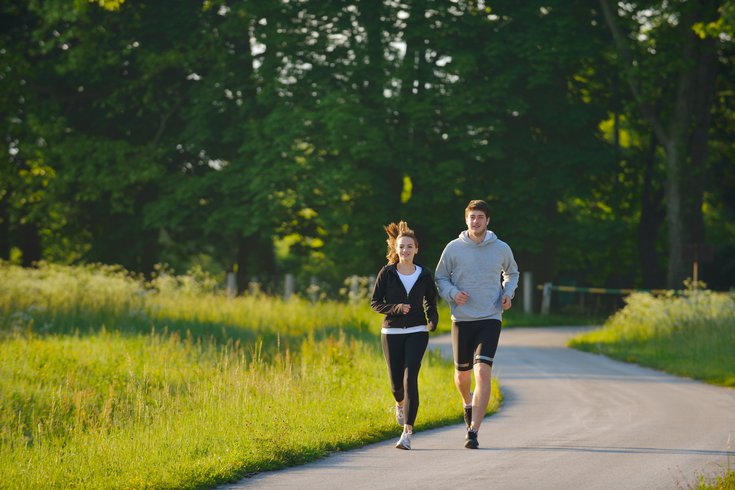
August 30, 2022
 Source/Image licensed from Ingram Image
Source/Image licensed from Ingram Image
Only 24.2% of U.S. adults met federal benchmarks for physical activity in 2020, a new CDC report shows. Men were more likely than women to complete at least 150 minutes of aerobic exercise and two strength-building workouts each week.
Adults need 150 minutes of moderate-intensity aerobic activity each week and should perform muscle-strengthening activities at least twice during that span, according to national guidelines.
But only 24.2% of Americans met each of those benchmarks during 2020, the first year of the COVID-19 pandemic, a new report from the U.S. Centers for Disease Control and Prevention shows. Another 22.7% only met the recommendation for aerobic activity and 6.8% just met the guideline for muscle-strengthening activities.
That means 46.3% of adults failed to meet either recommendation.
Several factors, including age, gender, race and income status, impacted the likelihood that a person met the marks, which were set by the U.S. Department of Health and Human Services in 2018.
Physical activity decreased with age, the report found. Among people under age 35, 41.3% of men and 28.7% of women met both guidelines. Those figures diminished with every subsequent age group for both genders.
Additionally, the percentage of people who hit both benchmarks increased with income level. Adults with family incomes of at least 200% above the federal poverty level were more likely to achieve them.
The report also found racial and ethnic differences. Hispanic men were less likely to meet the recommendations than white, Asian and Black men, who each reported similar rates of physical activity. White women were more likely to meet them than other racial and ethnic groups.
Men were more likely than women to meet the benchmarks, regardless of income level, racial group or age. Overall, 28.3% of men and 20.4% of women met both guidelines.
Increasing the proportion of adults who meet the physical activity guidelines remains an HHS priority, the report states.
"Regular physical activity can improve overall health and prevent negative health outcomes in people of all ages," the report says. "Research shows that health benefits occur with at least 150 minutes of moderate-intensity aerobic activity, and that both aerobic and muscle-strengthening activities are beneficial."
The report was based on data from the 2020 National Health Interview Survey.
Though many adults point to their busy schedules as the reason regular exercise isn't feasible, fitness experts say a little creativity can go a long way.
Here are some tips curated from St. Mary's University Twickenham London, Redbook and Muscle and Fitness:
• Add exercise into your daily work commute. If you can, walk or bike to work. If the distance is too far, disembark from the bus one stop early and walk the rest of the way, or park your car a distance from your office so you can get some extra steps in.
• Do some squats or lunges while you are watching television in the evening. If you have an exercise bike, catch up on your favorite show while clocking in some miles.
• Use your lunch break for some physical activity, whether that's taking a yoga class or going for a walk outside.
• Exercise while your kids are at their activities. Take a walk while waiting for your child's soccer practice to finish up or run around the hockey rink while your child is on the ice.
• Schedule your workout as an appointment so you are less likely to cancel it. The appointment slot offers a reminder that exercise is an important part of the day.
• Work out in the mornings before the rest of the household is up and demanding attention. Some studies show that exercising in the morning is better than at any other time of the day.
• When you are really busy, try switching up your routine with 15-minute, high-intensity workouts that are effective, but won't eat up so much of your time.
• The weekends are the perfect time to squeeze in longer, more intense workouts. The longer sessions will help reduce stress from the past week. If you complete two, 60-minute weekend workouts and a 30-minute workout during the week, you will meet the recommended weekly amount of aerobic exercise.